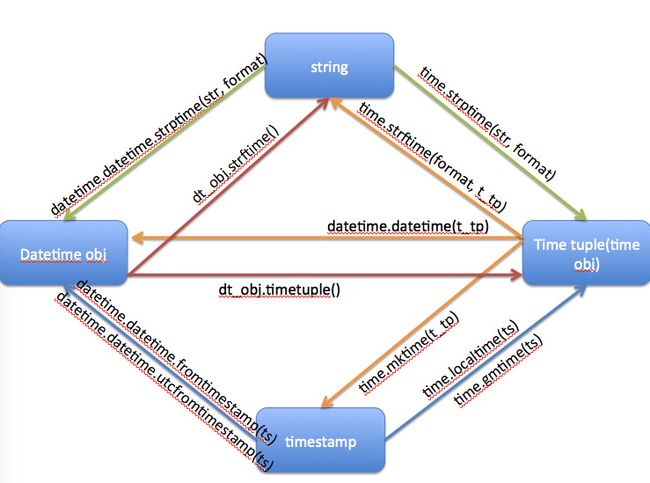Python奇技淫巧
- 1. 显示有限的接口到外部
- 2. with的魔力
- 3. filter的用法
- 4. 一行作判断
- 5. 装饰器之单例
- 6. staticmethod装饰器
- 7. property装饰器
- 8. iter魔法
- 9. 神奇partial
- 10. 神秘eval
- 11. exec
- 12. getattr
- 13. 命令行处理
- 14. 读写csv文件
- 15. 各种时间形式转换
- 16. 字符串格式化
- 17. 参考链接
本博客采用创作共用版权协议, 要求署名、非商业用途和保持一致. 转载本博客文章必须也遵循署名-非商业用途-保持一致的创作共用协议.
显示有限的接口到外部
当发布python第三方package时, 并不希望代码中所有的函数或者class可以被外部import, 在__init__.py中添加__all__属性,
该list中填写可以import的类或者函数名, 可以起到限制的import的作用, 防止外部import其他函数或者类
|
|
with的魔力
with语句需要支持上下文管理协议的对象, 上下文管理协议包含__enter__和__exit__两个方法. with语句建立运行时上下文需要通过这两个方法执行进入和退出操作.
其中上下文表达式是跟在with之后的表达式, 该表示大返回一个上下文管理对象
|
|
详细原理可以查看这篇文章, 浅谈 Python 的 with 语句
知道具体原理, 我们可以自定义支持上下文管理协议的类, 类中实现__enter__和__exit__方法
|
|
执行结果如下:
|
|
证明了会先执行
__enter__方法, 然后调用with内的逻辑, 最后执行__exit__做退出处理, 并且, 即使出现异常也能正常退出
filter的用法
相对filter而言, map和reduce使用的会更频繁一些, filter正如其名字, 按照某种规则过滤掉一些元素
|
|
一行作判断
当条件满足时, 返回的为等号后面的变量, 否则返回else后语句
|
|
装饰器之单例
使用装饰器实现简单的单例模式
|
|
staticmethod装饰器
类中两种常用的装饰, 首先区分一下他们
- 普通成员函数, 其中第一个隐式参数为
对象 -
classmethod装饰器, 类方法(给人感觉非常类似于OC中的类方法), 其中第一个隐式参数为类 -
staticmethod装饰器, 没有任何隐式参数.python中的静态方法类似与C++中的静态方法
|
|
property装饰器
- 定义私有类属性
将property与装饰器结合实现属性私有化(更简单安全的实现get和set方法)
|
|
fget是获取属性的值的函数,fset是设置属性值的函数,fdel是删除属性的函数,doc是一个字符串(like a comment).从实现来看,这些参数都是可选的
property有三个方法getter(), setter()和delete() 来指定fget, fset和fdel。 这表示以下这行
|
|
iter魔法
- 通过yield和
__iter__的结合, 我们可以把一个对象变成可迭代的 - 通过
__str__的重写, 可以直接通过想要的形式打印对象
|
|
神奇partial
partial使用上很像C++中仿函数(函数对象).
在stackoverflow给出了类似与partial的运行方式
|
|
利用用闭包的特性绑定预先绑定一些函数参数, 返回一个可调用的变量, 直到真正的调用执行
|
|
神秘eval
eval我理解为一种内嵌的python解释器(这种解释可能会有偏差), 会解释字符串为对应的代码并执行, 并且将执行结果返回
看一下下面这个例子
|
|
exec
- exec在Python中会忽略返回值, 总是返回None, eval会返回执行代码或语句的返回值
-
exec和eval在执行代码时, 除了返回值其他行为都相同 - 在传入字符串时, 会使用
compile(source, '编译字节码. mode的取值为', mode) exec和eval
|
|
getattr
getattr(object, name[, default])Return the value of the named attribute of object. name must be a string. If the string is the name of one of the object’s attributes, the result is the value of that attribute. For example, getattr(x, ‘foobar’) is equivalent to x.foobar. If the named attribute does not exist, default is returned if provided, otherwise AttributeError is raised.
通过string类型的name, 返回对象的name属性(方法)对应的值, 如果属性不存在, 则返回默认值, 相当于object.name
|
|
命令行处理
|
|
读写csv文件
|
|
各种时间形式转换
只发一张网上的图, 然后差文档就好了, 这个是记不住的
字符串格式化
一个非常好用, 很多人又不知道的功能
|
|
参考链接
- What is the difference between @staticmethod and @classmethod in Python?
- Python @property versus getters and setters
- How does the @property decorator work?
- How does the functools partial work in Python?
- What’s the difference between eval, exec, and compile in Python?
- Be careful with exec and eval in Python
- Python (and Python C API): new versus init
- Python ‘self’ keyword
self不是关键字, 是一个约定的变量名 - Python进阶必读汇总
- 使python类可以判断真值
- Best Python Resources
- Python安全编码指南
